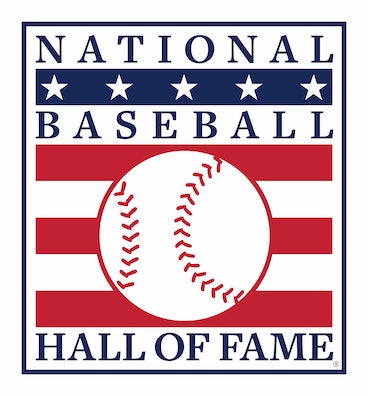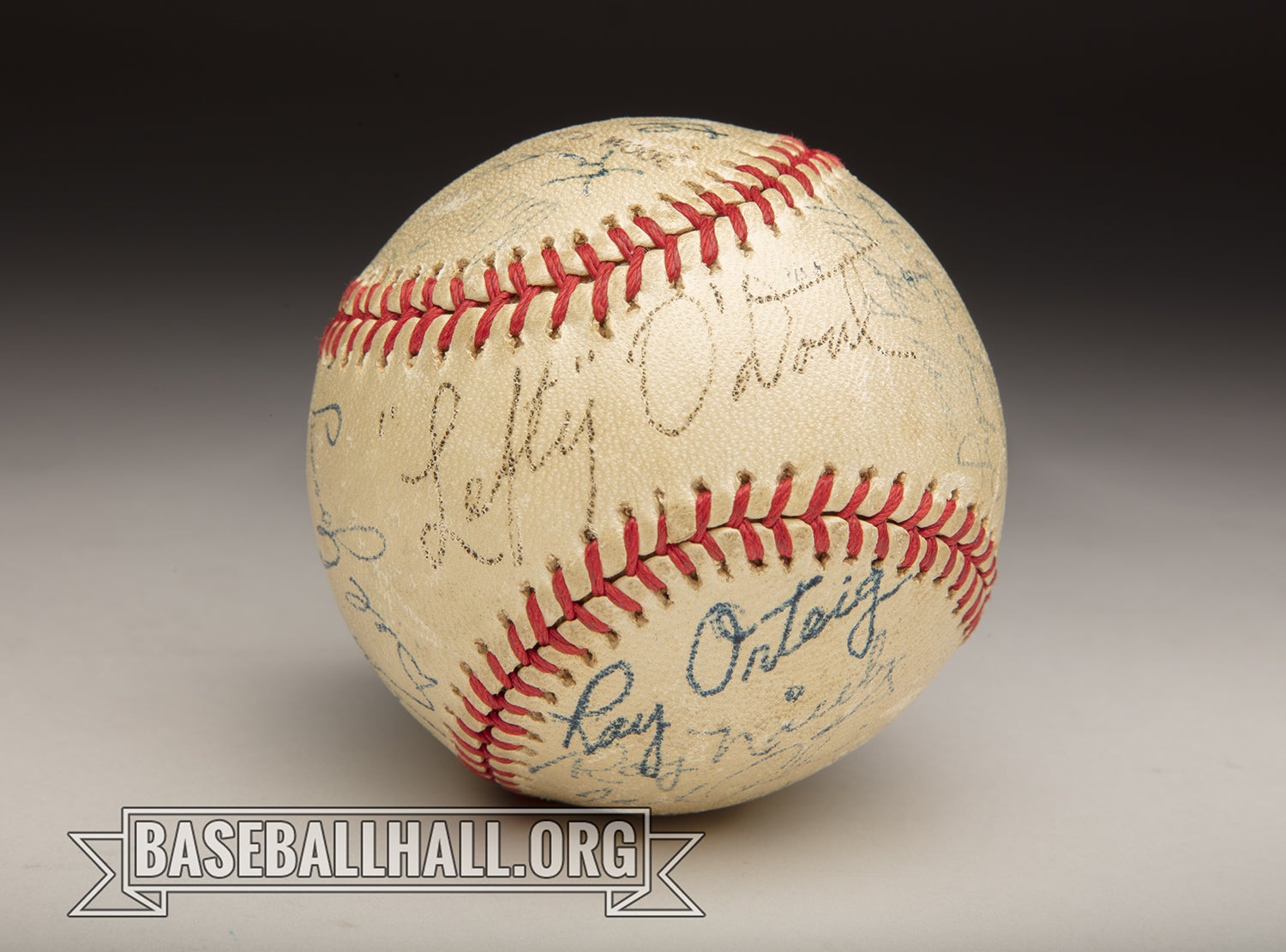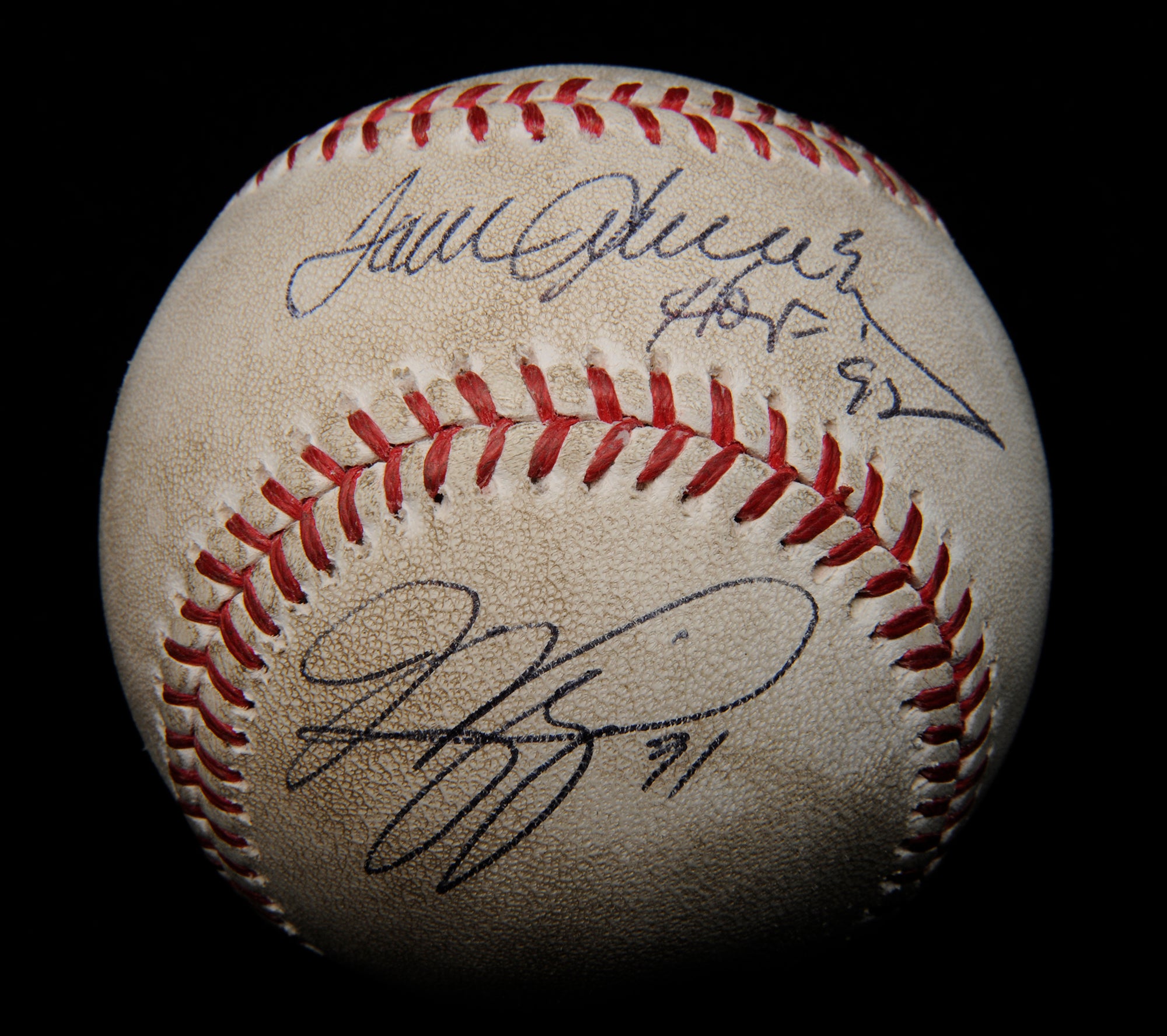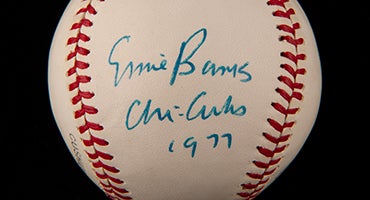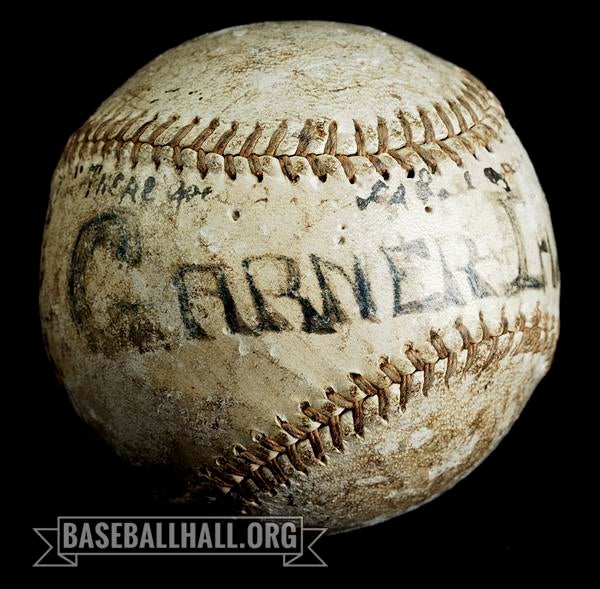#Shortstops: Mystery Ball
A mysterious baseball was donated to the Hall of Fame by Walter A. Zimmerman, from Kent, Ohio, in 1960. The hard rubber baseball was supposedly used in amateur baseball games in Yokosuka, Japan, in 1945.
This ball is interesting because there is no accompanying paperwork and the ledgers provide no further explanation than that it was a rubber baseball used in Yokosuka. Hence, we cannot fact check if this ball was actually used in Yokosuka. The only sure fact is that Japanese teams, especially youths, did and still do use rubber baseballs at some levels of competition.
Furthermore, Yokosuka had long been a naval yard, and on Aug. 30, 1945, command of the yard was handed over to the U.S. Marines. Thus, there are some formidable correlations to why Zimmerman may have had this ball. However, it is hard to confirm whether Zimmerman was part of the Navy that was stationed in Yokosuka at the time or not.
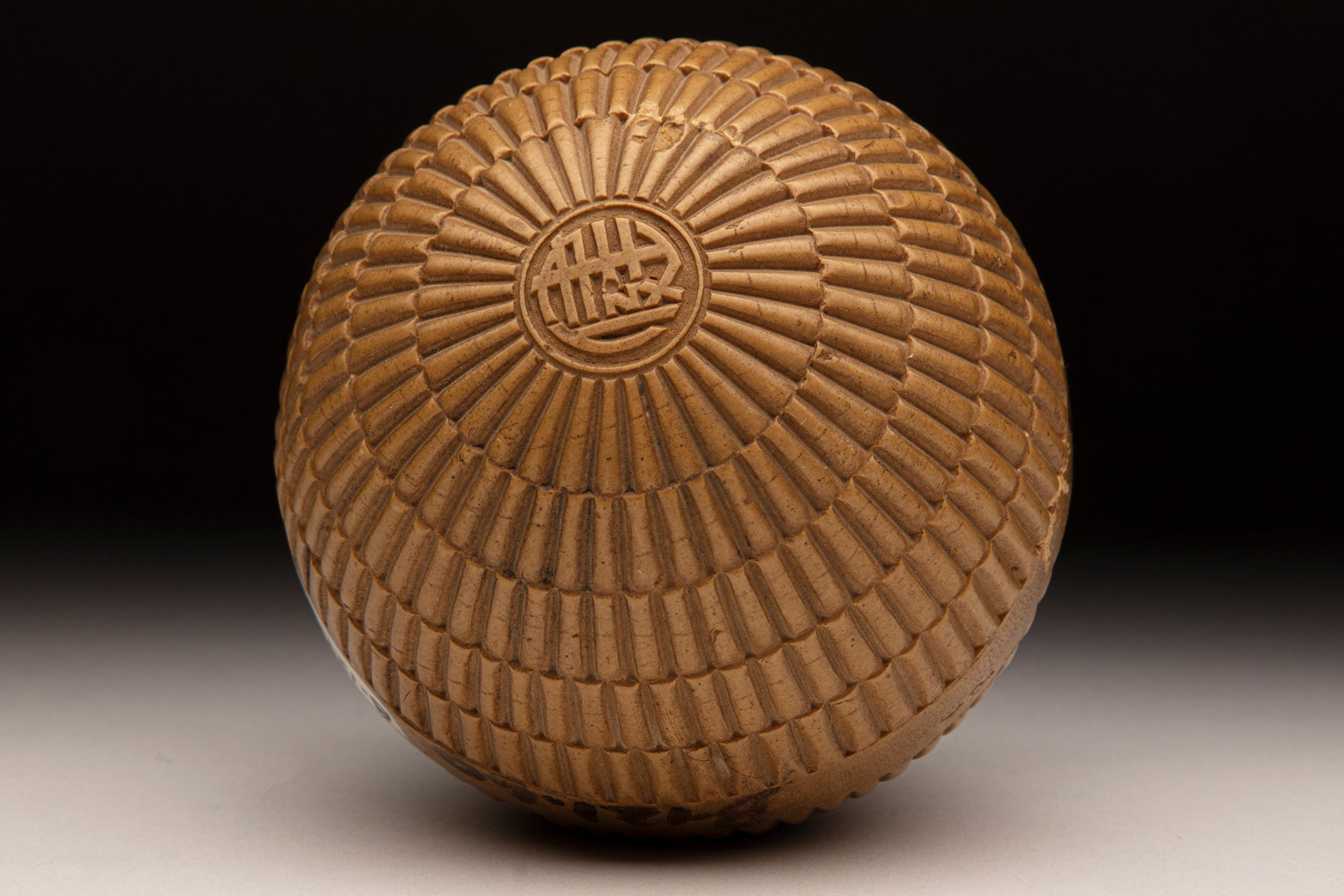
An article in the Akron (Ohio) Beacon Journal on April 19, 1942, stated that a “Walter A. Zimmerman, then 23, was fitted for duty in the naval reserve as a yeoman, third class...and is now undergoing recruit training at the U.S. naval training station (in Akron).” The article also states that Zimmerman played three years of varsity baseball at Buchtel High School in Akron – therefore linking the interest of baseball and Yokosuka’s geopolitical relationship. However, we cannot confirm if this is the same Zimmerman that donated the ball.
The ball itself is not very rubber-like; in fact it feels like very hard plastic and has jaded lines running up and down the surface. Additionally, the ball is marked on each side with the letter “健”, meaning health in Japanese. Similar balls like these were constructed by Nagase Rubber Manufacturing. Around 1938, the Materials Control Order was issued in Japan to strengthen the wartime system. Raw rubber, the raw material for rubber balls, was also an important wartime material, but because rubber ball was widely played among young people at military factories across the country, rubber balls were designated as "specially exempt rubber sports equipment" and their manufacture was permitted, under the pretext of increasing production motivation and improving physical strength.
While the mystery of the ball’s whereabouts is uncertain, speculations on the ball’s history can be made. If Zimmerman was stationed in Yokosuka at the time and had somehow come across the rubber ball, this ball is a significantly interesting piece of history.
Kenji Kajita was a 2025 curatorial intern in the Frank and Peggy Steele Internship Program for Leadership Development
